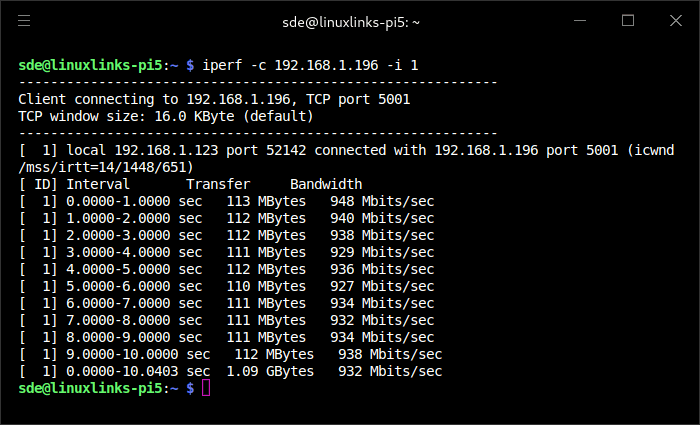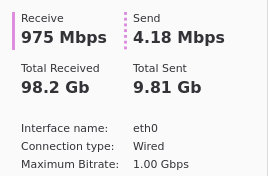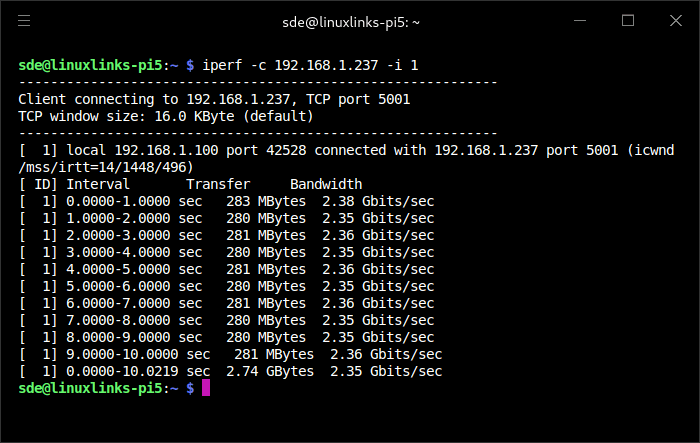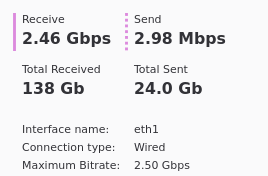This is a series of articles on the Raspberry Pi 5 focusing on using this single board computer as a desktop PC.
From a hardware perspective, the Raspberry Pi 5 lags behind some of its competitors including the Orange Pi 5 Max and Orange Pi 5 Ultra. For example, both these Orange Pi 5 single board computers provide 2.5G ethernet, whereas the Raspberry Pi 5 only offers 1G.
1G Ethernet provides a maximum theoretical speed of 1 Gbps (Gigabit per second), which translates to about 125 MB/s (Megabytes per second) in data transfer rates. 2.5G Ethernet, on the other hand, provides a maximum theoretical speed of 2.5 Gbps, which translates to about 312.5 MB/s in data transfer rates.
2.5G is 2.5 times faster than 1G Ethernet, so it allows significantly more data to be transmitted per second. Theoretical speeds alone indicate that you could transfer data 2.5 times faster on a 2.5G network compared to a 1G network, assuming the rest of the network infrastructure and devices support those speeds.
Upgrading to a 2.5 Gbps ethernet network offers faster speeds, improved responsiveness, and future-proofs your network. It’s a sensible upgrade for users who need more bandwidth for tasks like 4K streaming, and faster file transfers to NAS devices. And you still benefit even if your internet is not full fibre.
Raspberry Pi 5 Onboard ethernet
Let’s look at the bandwidth and transfer rates when using the Raspberry Pi 5’s onboard ethernet.
In the example below, I’m using iperf to check the connection speed. iperf is a tool for active measurements of the maximum achievable bandwidth on IP networks.

There is always overhead with TCP packets, so you never achieve 1 Gbits/sec.
Let’s copy a large file over the 1G ethernet. Here’s the output from Mission Center showing that we’re getting very close to the 1G limit.

UGREEN 2.5Gbps High-Speed Network Adapter
For faster speed, the obvious solution to upgrade the Raspberry Pi 5’s ethernet by using a USB network adapter. One such example is the UGREEN USB-A 3.2 Gen 1 2.5G ethernet adapter. It uses the Realtek RTL8156BG chip. I do like its aluminium housing, but it’s a tad expensive, currently retailing for £17.99 on Amazon.

Just plug the UGREEN USB port into one of the two Raspberry Pi 5’s USB 3 ports, connect a Cat 5e/Cat 6 cable from the UGREEN RJ45 port to a router or switch that offers 2.5G. That’s it. There are no drivers to install with the Raspberry Pi 5 OS. Plug and play, not plug and pray.
Here’s iperf output using the USB ethernet adapter.

And now we’re copying a large file to the Raspberry Pi 5.

Summary
2.5G ethernet is a significant improvement over 1G and doesn’t even need purchasing new cables.
A USB ethernet adapter offers a great improvement in transfer rates but it uses one of the Raspberry Pi 5’s USB 3 ports. And given that the single board computer only has 2 of them they are a precious commodity unless you’re also prepared to purchase a USB splitter.
All articles in this series:
| Raspberry Pi 5 Series | |
|---|---|
Hardware | |
| iRasptek Starter Kit | All the kit you need to get started with the Pi 5 |
| Pironman 5 Case Review | Transform the Pi 5 into a beautiful desktop mini PC |
| Passive Cooling the Pi 5 | Passively cool your Pi 5 the right way. Silent yet cool |
| Benchmarking | Benchmarking the Pi 5 against an Intel N100 mini PC |
| Overclocking | Let's increase the clock speed of the BCM2712 SoC |
| Power Consumption | Compare the power consumption of the Pi 5 with Intel Mini PCs |
| 2.5Gbps Networking | Improving the wired performance of the Pi 5 |
| WiFi | Improve WiFi performance of the Pi 5 |
| Desktop PC | Is the Pi 5 good value compared to an Intel N100 Mini PC? |
Configuration | |
| raspi-config | Useful text-based tool to configure the Pi 5 |
| PiGro | GUI tool that streamlines the process of managing the Pi 5 |
| Increase Swap Memory Size | Increase the swap size from 512MB to 2GB |
| ZRAM swapdrive | Simple script to use a ZRAM swapdrive instead of a swapfile |
Software | |
| Installing Software | Different ways to install software on the Pi 5 |
| df snap pollution | Replace df with dysk |
| Ollama GUI | Running Large Language Models on the Pi 5 |
| Music Players | GUI and TUI music players explored |
| Internet Radio | Exploring the best options for both GUI and TUI software |
| Many software articles are planned. Stay tuned! | |

UGREEN’s products are mostly overpriced junk.
I agree they are sometimes expensive.